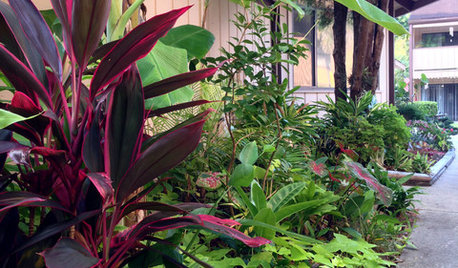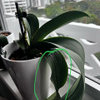Question about Spathiphyllum Domino (Peace lily) Photos
greattigerdane
15 years ago
Related Stories

REMODELING GUIDESSurvive Your Home Remodel: 11 Must-Ask Questions
Plan ahead to keep minor hassles from turning into major headaches during an extensive renovation
Full Story
KIDS’ SPACESPhotos of 2013: The Most Popular Kids’ Spaces
Built-in bunk beds, cool colors and other smart design elements offer ideas for kids’ bedrooms, nurseries and playrooms everywhere
Full Story
PHOTO FLIP94 Dream Bedscapes
Picture yourself in one of these settings for a stylish night’s sleep
Full Story
FEEL-GOOD HOME6 Design Ideas for Happy Pets
Keep your dog or cat feeling safe and in high spirits, and you'll all feel more at peace. Here's how
Full Story
GARDENING GUIDESA Mom, a Garden and a Gift for the Neighbors
Gardening can be therapeutic in unexpected ways. See how one gardener found peace and purpose in a patch of Florida soil
Full Story
DECORATING GUIDESRoom of the Day: Monet Colors Make a Sunroom Irresistible
Drab-day blues? Not if these cheery colors, overstuffed furniture and natural textures have anything to say about it
Full Story
LANDSCAPE DESIGNKoi Find Friendly Shores in Any Garden Style
A pond full of colorful koi can be a delightful addition to just about any landscape or garden
Full Story
HOUZZ TOURSMy Houzz: Original Drawings Guide a Midcentury Gem's Reinvention
Architect's spec book in hand, a Washington couple lovingly re-creates their midcentury home with handmade furniture and thoughtful details
Full Story
GARDENING AND LANDSCAPINGHow to Make a Pond
You can make an outdoor fish paradise of your own, for less than you might think. But you'll need this expert design wisdom
Full StoryMore Discussions











maidinmontana
greattigerdaneOriginal Author
Related Professionals
Deer Park Landscape Architects & Landscape Designers · Rancho Cordova Landscape Architects & Landscape Designers · Suffern Landscape Architects & Landscape Designers · Aurora Landscape Contractors · Middletown Landscape Contractors · Allentown Landscape Contractors · Brookside Landscape Contractors · Bristol Landscape Contractors · Duarte Landscape Contractors · Hampton Bays Landscape Contractors · Olympia Landscape Contractors · Royal Oak Landscape Contractors · Shaker Heights Landscape Contractors · Welby Landscape Contractors · Vadnais Heights Landscape Contractorszadeone1_yahoo_com
vlmastra
vlmastra
vlmastra
exoticrainforest
pirate_girl
vlmastra
exoticrainforest
exoticrainforest
vlmastra
vlmastra
exoticrainforest
pirate_girl
exoticrainforest
exoticrainforest